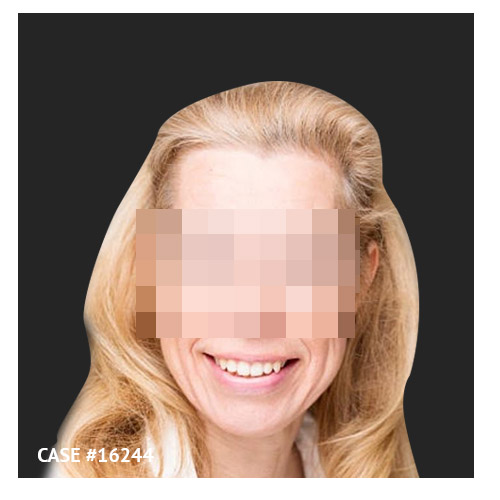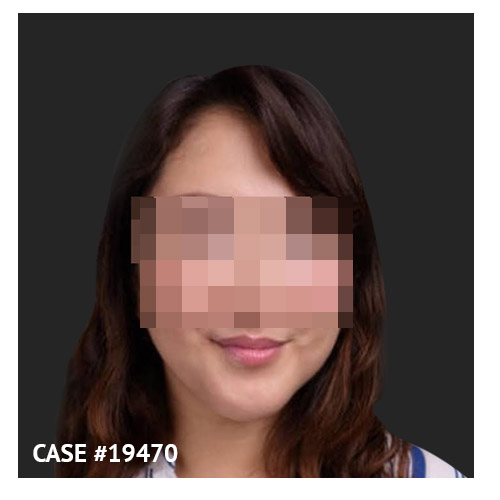

Facelift Testimonials That Speak For Themselves
Our Before And After(s)
Your Facelift Done Right The First Time
Before And After(s)
The Most Cost Affordable #1 Rated Facelift – Your Results Priceless














The #1 Rated Facelift Surgery To
Thousands Of Clients Worldwide!
At A Cost Everyone Can Afford!
Facelift, Deep Plane Facelifts, MACs Facelift, Mini Facelift, Mid Facelift, FAMI

30+ Years
Corporate Experience

Asia’s Only US Based
Medical Center

Board Certified
Rhinoplasty Specialists

102 Countries
World Wide

353,010 Extremely
Satisfied Clients
Trust Us. We’ve Done More Facelifts Than Anyone At a Price You Can Afford! Providing the Best in Facelift Surgery for over Thirty Years.
Is Age Starting To Show On Your Face?
Tired of all those non invasive derma treatments for your face that have cost an arm and a leg that promise to tighten, tone and remove wrinkles from your aging face?
You’ve known for years those derma treatments were only short term and temporary solutions to your aging face.
Get the permanent solution to remove the jowls, deep creases around your nose and mouth, and the deep wrinkles of your neck and face and your sagging neck.
It’s time to have that facelift surgery you’ve been avoiding all these years.
What Is Facelift Surgery?
Are you interested in drastically improving and removing the deep creases around your nose and mouth? How about those deep wrinkles of your neck, face and sagging neck too?
Facelift surgery, or rhytidectomy, is a cosmetic surgery procedure that aims to get back your youthful appearance to your face.
Rhytidectomy or Facelift surgery can tighten loose, hanging skin around the jaw line, also known as “jowls.” It can also remove deep creases around the mouth and nose, and excess, hanging skin and fat under the chin and in the neck. It reshapes the lower half of the face by removing excess facial skin.
The facelift surgery procedure can also tighten the underlying tissues, and it may be combined with surgery to enhance the forehead, cheeks, brows, and eyelids.
Statistics show that women will undergo a facelift surgery ten times more often than men. Among men, facelift surgery is the fifth most common type of cosmetic surgery.
It is important to have reasonable expectations when undergoing facelift surgery and to remember that a facelift will not stop the overall aging process.
Facelift Surgery And Men.
Getting a natural look for men after facelift surgery is a little harder to achieve for men can be harder to achieve because of their facial features and most have hair in front of their ears, or sideburns. The facelift surgery procedure requires facial skin to be pulled backward and upward and doing this to sideburns especially can look odd after facelift surgery.
Benefits Of Facelift Surgery Philippines!
There are many benefits of facelift surgery but for every one, those benefits are related to several factors to include: each person’s goals and expectations, the skin type of the individual – great skin elasticity to begin with will get better results and their bone structure.
Facelift surgery tends to create, as a result, a smoother youthful appearance by: removing or tightening excess sagging skin, reducing the drooping of the cheeks around the jawline caused by time and gravity, tighten and lifts the corners of the mouth, and minimizes the creases left between the cheeks and the lips
Facelift Surgery Types!
The term facelift surgery is often misunderstood as the misconception it has with surgery to the face. Patients tend to assume that a facelift surgery treats the whole facial area when actually there are three regions of the face.
In reality, facelift surgery usually treats the lower two-thirds of the face onlywhich is everything below the tops of the ears. An upper facelift (or brow lift), on the other hand, is a separate procedure, although it can often be performed at the same time as a facelift, depending on the patient’s needs.
It’s important when contemplating facelift surgery to understand the terms “upper face,” “midface” and “lower face.” Generally, the “upper face” is everything above your eyes which primarily is your brow line and forehead.
The term “midface” describes the area from the corners of your eyes to the corners of your mouth, so this includes your nose, cheeks and the area above your upper lip.
Finally, the “lower face” includes everything below the corners of your mouth. That would include the laugh lines (nasolabial folds) and jawline. Thus a lower facelift addresses the area under the chin and the neck as well.
Depending on your skin type and bone structure, there are many types or choices for your facelift procedure to maximize your results. These include:
Deep Plane Face Lift: The deep plane facelift avoids the problem of the tight overfilled look of many modern facelifts. The main facelift surgery approach of the deep plane facelift is that it lifts only under the muscle layer.
Leaving the facial skin attached to the muscle layer, provides for a facelift surgery result that looks natural and doesn’t look tight. It also lifts the cheeks by releasing the tethering points of the face in the deep plane so that addition of fat or filler is unnecessary.
Mini Facelift: Mini facelift surgery, sometimes called a “short scar” facelift is the most common type of facelift surgery performed today as it address wrinkles and sagging skin on the lower third of the face.
A mini facelift uses small incisions placed around the ears and is a less invasive procedure. It restores definition to the chin by removing excess tissue and artfully tightening remaining tissue but does not address neck sagging or excess skin.
Scarring and recovery time may be shorter than in a traditional facelift.
Mid Facelift: A mid-face lift, also known as a cheek lift, is a type of facelift that focuses on the earliest signs of aging such as the sagging of the cheeks and the surrounding area.
For many patients, the regular facelift surgery may not fully treat the mid facelift areas such as the upper cheek and lower eyelid areas of the face, which often flatten and lengthen with age.
MACs Facelift:
A MACS facelift is the abbreviation for what is fully known as a Minimal Access Cranail Suspension facelift or also referred to as a short-scar facelift. The MACs facelift is generally recommended for patients between 40-55 years of age to tighten a slightly sagging face and limited sagging jowls and is great for patients with a great skin tone.
The MACS) lift as previously indicated targets slightly sagging face and jowls, procedurally this is done by concentrating on the lower and middle third of the
Face.
Neck Lift: A neck lift is done by making small incision, or cut, under the chin to tighten the skin and deeper tissue of the neck. This is known as a neck lift.
Thread Lift: As the name suggests, a thread lift is exactly what it describes. A thread lift procedure is a non-surgical facelift, and uses absorbable sutures which are made from biodegradable polymers to lift and re-contour the mid and lower face.
And like its surgical counterpart, facelift surgery, it lifts and firms sagging facial tissues, improve the appearance of cheeks, brow and jawline to restore a more naturally youthful facial appearance thereby turning back the hands of time.
FAMI: Facial Autologous Muscular Injection (FAMI) is also known as Fat Autograft Muscular Injection (Autologous Fat Injection, Micro-lipoinjection, Fat Transfer and Facial Autologous Mesenchymal Integration), abbreviated as FAMI. The technique is a non-surgical, non-incisional procedure using the patient’own stem cells from fat deposits.
FAMI is used to address the loss of volume to the face due to aging or surgery repair in restoring facial muscles, bone surfaces and very deep fat pads. The procedure involves removing adult stem cells of fatty tissue from lower body, and refining it to be able to re-inject living adipose stem cells into specific areas of the face without incision.
Combining Additional Cosmetic Surgeries With A Facelift
Often a facelift is combined with other cosmetic procedures to get the desired results. Sometimes a neck lift maybe recommended to refine the appearance of your lower face, chin and neck area.
There are other cosmetic procedures as well that may be considered that should be done concurrently like a having your eye bags removed, an eye lift (blepharoplasty). Since one is undergoing surgery, they may also consider a rhinoplasty (nose job) of liposuction of the cheeks or chin or perhaps chin implants.
Which Facelift Is Right For You?
Understanding the terminology and the types of facelift surgery is a great first step, but ultimately, getting the best type of facelift for you is the ultimate goal.
Customizing your facelift surgery is the bottom line and getting your facelift surgery done right can only be done by selecting a skilled, experienced and specialized board-certified plastic surgeon.
Your surgeon should be able to tailor your facelift surgery to fit your precise needs and desired goals. Keep in mind that each cosmetic facelift surgery surgeon is different and each has his or her own approach.
So please feel free to consult with different surgeons and ultimately pick the one you are most comfortable with.
Who Are Not Candidates for Facelift Surgery?
Facelift surgery is not recommended for anyone with serious medical problems, and the candidate should be in good mental and physical health. Your medical internist will insure that you will be fit and cleared for surgery.
Patients with high blood pressure and diabetes have a higher risk of complications.
Cigarette smoking and tobacco use increase the risk of complications after surgery. It can interfere with wound healing. A person who is considering a facelift should completely stop smoking or using nicotine products.
Facelift Surgery Risks
The most notable risk of facelift surgery is the physical deformities that are the most notable. These include: if too much skin is removed, the face can look pulled-back or startled; distorted looking earlobes; loss of hair around the incision site; scarring; unevenness between two sides of the face and widening or thickening of scar tissue.
These obvious negative looking results of course can be minimized as long as a qualified and experienced facelift surgery professional carries them out.
There are also medical risks and complications although infrequent. These risks and complications include: bleeding, bruising, complications of anesthesia, damage to the facial nerves controlling muscles which is normally temporary, hematoma, infection, numbness which can improve within days or weeks, skin necrosis, or tissue death,
Patients should not use taking aspirin or other blood thinners for at least a week before surgery.
How Is Facelift Surgery Done!
Facelift surgery, like most cosmetic surgery procedures are usually done on an outpatient basis or day surgery.
Generally, local anesthetics and sedatives or general anesthesia is provided prior to surgery to calm the patient.
The facelift surgery procedure can take from 2 to 5 hours, and after the patient recovers for a few hours, the can normally go home and on the same day after surgery.
During a facelift surgery, the facelift surgeon, depending on the type of facelift surgery will make an incision in front of the ear, extending up into the hair or hairline as well as behind the ear into the hair-bearing scalp.
The surgeon lifts the skin off the deeper facial muscles and fat, and will gently pull the skin in an upward and posterior direction, and removes the excess skin. The facelift surgeon may at this time tighten the deeper tissues of the face.
Forehead skin can be raised through small incisions in the frontal hairline. It is then lifted and secured to the deeper tissues to prevent further sagging or drooping.
After the how is facelift surgery is done, incisions are then closed with sutures and quite possibly staples. A drain could be placed under the skin behind the ear for one or two days, to remove any excess blood and fluids that may occur. Bandages are applied.
The incisions in front of and behind the ear are usually not noticeable.
For the best results, a person may need additional procedures, such as a neck lift, eyelid surgery, liposuction, fat injection, removal of cheek fat, forehead lift, brow lift, chemical or laser peel, and cheek or chin implants.
Facelift Surgery Recovery
Most patients will experience some discomfort post surgery or doing the initial hours of facelift surgery recovery, but medication provided should alleviate any pain or can relieve tenderness.
Incisions and bandages must be kept dry, and the patient should follow the specific post- operative instructions about bathing and washing within the first 24 hours.
Sutures are removed about 5 to 10 days after surgery.
Numbness and muscle stiffness is normal for some time. Scars can take nearly a year to fade and tone down.
It is important to follow the doctor’s instructions, as this will speed the healing process and allow for the best possible result.
If you experience any notices inflammation, pain, redness or swelling in the days following surgery, please call you facelift surgeon and seek medical help or advice. This could be a sign of hematoma. If there is a fever, they may have an infection.
Facelift surgery recovery time is between 1 to 2 weeks.
Facelift Surgery Recovery Time
Bruising and swelling will be at their worst 2 days after your face lift surgery and persist for a few days.
Your facelift surgery recovery normally takes around 2 weeks, and historically you can resume your vigorous activities after 4 weeks.
Everyone heals differently and genetics play a role. To maintain the natural youthful look that your facelift surgery accomplished, a healthy lifestyle with a balanced diet and sufficient exercise can help to maintain the benefits you received from your facelift surgery.
Avoiding smoking and limiting alcohol intake, stress, sun exposure, and contact with pollutants can all help extend the youthful appearance of skin.




